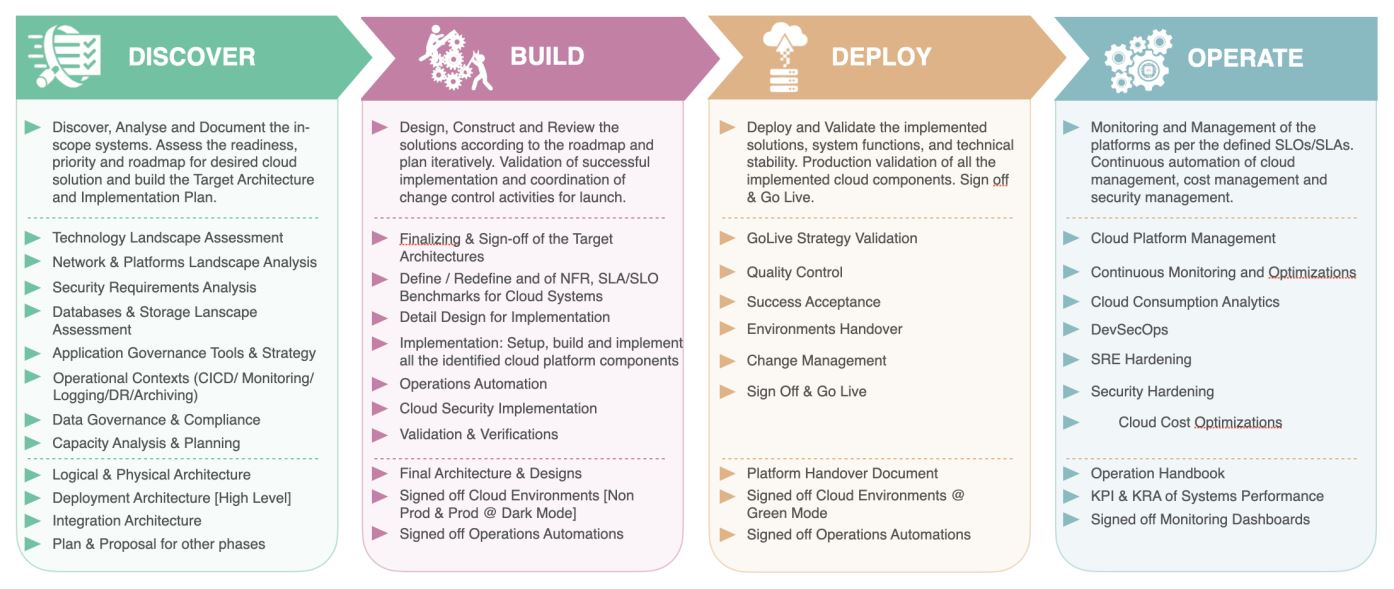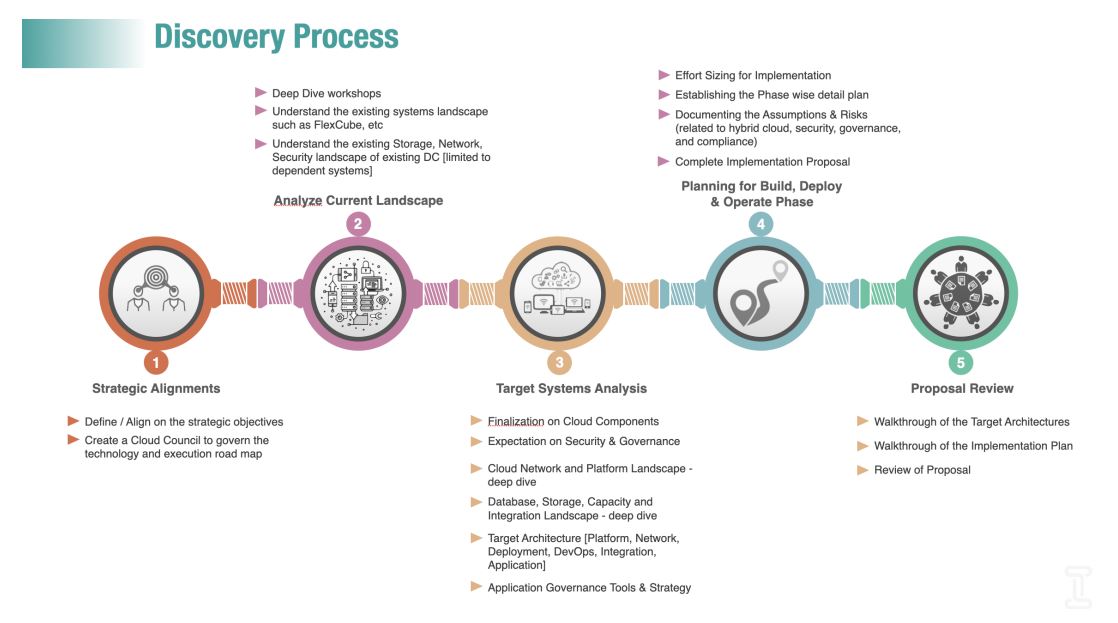Our Hybrid Cloud Migration Consulting Service is designed to help organizations seamlessly transition their applications, data, and infrastructure to the cloud. As businesses continue to evolve, so too does their technology infrastructure. Many businesses now rely on multiple cloud providers for their computing and storage needs. However, managing multiple cloud environments can be challenging. This is where our Hybrid Multi-Cloud Migration services come in. Our team will help you seamlessly migrate your existing applications and data to a hybrid multi-cloud environment. We have the expertise to ensure that your migration is done efficiently, with minimal disruption to your business.
Our Multi Cloud Strategy is designed to help organizations efficiently integrate and manage their on-premises, private cloud, and public cloud infrastructure. By incorporating industry best practices, leveraging leading technologies, and providing expert guidance, we enable businesses to optimize their IT resources, enhance security and compliance, and drive overall performance.
Offerings:
For more detailed insights about the “Hybrid Cloud Migration Handbook,” we recommend clicking the download button.
OUR MIGRATION APPROACH:
The process of moving applications, workloads, and data from on-premises infrastructure to the cloud typically involves the following 4 steps: ( Discover, Build, Deploy & Operate )

1. DISCOVER:
The Discovery stage is the first stage in the cloud migration process. Its goal is to discover and assess the existing IT environment to determine which systems and applications are suitable for migration to the cloud. Overall, the Discovery stage is critical to the success of a cloud migration project. By carefully assessing the existing IT environment and developing a detailed migration plan, organizations can ensure a smooth and efficient migration process. By following these steps, organizations can ensure that their migration is well-planned and executed, resulting in a successful transition to the cloud.

STEPS:
Deliverables of Discover Stage:
2. BUILD:
Overall, the build stage of a cloud migration is focused on implementing the migration plan developed during the discover stage. By following these steps, organizations can ensure that their migration is well-designed, constructed, and tested, resulting in a successful transition to the cloud.
STEPS:
Deliverables of Build Stage:
3. DEPLOY:
Overall, the Deploy stage of a cloud migration is focused on deploying and validating the migrated solutions in the production environment. By following these steps, organizations can ensure that their migration is successful, and their applications and data are available and performing well in the cloud environment.
STEPS:
Deliverables of Deploy Stage:
4. OPERATE:
The Operate stage follows the Deploy stage in a cloud migration and involves ongoing monitoring and management of the cloud platform to ensure that it is performing as expected and addressing any issues that arise. By following these steps, organizations can ensure that their cloud platform continues to perform as expected and is optimized for cost and security, leading to maximum efficiency and effectiveness.
STEPS:
Deliverables of Operate Stage:
For more detailed insights about the “Hybrid Cloud Migration Handbook,” we recommend clicking the download button.
